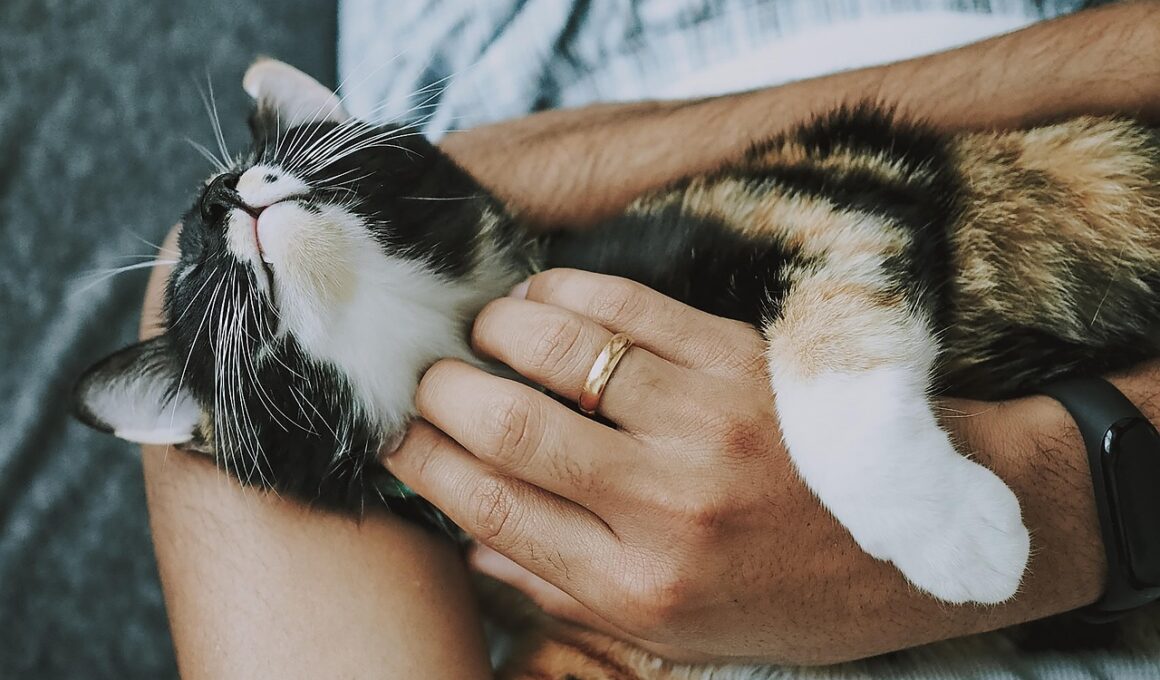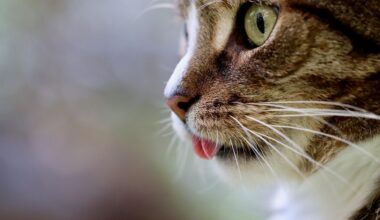From Feral to Friendly: Amazing Cat Rescue Transformations
Every cat has a story, particularly those who were once feral. These cats often face lives filled with survival challenges. Fortunately, they frequently find compassionate rescuers dedicated to changing their fates. Transforming a feral cat into a lovable companion is no small task, but several success stories demonstrate that it can happen. Rescuers often begin by earning trust, using food as a bridge to connection. Taming a feral cat requires time and patience, allowing them to adjust comfortably. A gentle approach often leads to even the most skittish cats learning to embrace human companionship. It is essential to remember that every cat’s journey is unique, and one size does not fit all. Some cats may take longer than others. Socialization is crucial; every cat needs their own space and environment to thrive. Rescuers frequently share stories about their challenges and joys, helping promote understanding. The emotional rewards of bringing a feral cat indoors and cultivating kindness cannot be overstated. Success stories not only inspire others; they also reflect the resilience of these remarkable animals.
Understanding Feral Cats and Rescue Missions
Feral cats are typically defined as those that were born or have lived outdoors without human contact. These animals thrive in colonies, relying on instinct and each other for survival. Understanding a feral cat’s behavior is vital in rescue efforts. Many rescuers start to find and trap feral cats using humane traps. After being brought to shelters or safety, the next step is often spaying or neutering. This procedure helps control the feral cat population, providing significant long-term benefits. Rehabilitation then begins, where patience is essential. Cats that had previously lived successfully in the wild may struggle to adapt to domesticated life. Trust-building techniques revolve around creating routine, offering food, and removing stressors. Environments must be calm and inviting for cats to begin feeling safe. Even small advancements, such as a cat approaching a human, can be particularly encouraging. Over time, these efforts lead to stunning transformations as feral cats become more comfortable and affectionate. Progress may also encourage others to participate in feral cat rescue missions. Awareness about their struggles gives hope and fuels even more successful rescue operations.
Many success stories stem from partnerships between local animal rescue organizations and dedicated volunteers. These individuals work tirelessly to provide care, nutrition, and socialization to feral cats. Each successful rescue further demonstrates the importance of collaboration among community members. Various local agencies often offer resources for rescuers, including guidance, financial support, and networking opportunities. Volunteers play a crucial role in this process, helping to spread awareness of feral cats. Educating the public on responsible pet ownership is critical in reducing abandoned cats. Success stories frequently highlight the incredible journey from stray to beloved house cat. Cats like Momo, a former street cat who captured a family’s heart, serve as inspiring examples. Momo slowly learned to trust humans and now thrives in a loving home. Positive transformations create ripples within communities, inspiring further volunteer efforts and involvement. Knowing a feral cat can transition into a cherished pet encourages others to take action. Success stories provide vital messages for both animal lovers and concerned citizens. Together, people can positively impact the lives of feral cats and help nurture them into adoring companions.
Success Stories: A Journey of Transformation
Stella, a once-timid feral cat, embodies a heartwarming success story. Initially shy and anxious, she gradually came to trust her rescuers. With gentle persistence, the team provided her safe shelter and medical care. After several weeks, Stella began to explore her environment. Slowly, she approached the volunteers seeking affection. Recognizing the right balance between space and attention is critical. Eventually, Stella learned the joys of play and cozy companionship. Stories like Stella’s highlight how patience and understanding can yield incredible results. Another captivating example is Tom, a feral cat who initially lived under a local deck. He was trapped and taken to a rescue center, where he underwent rehabilitation. Tom aligned with the right caregivers who devoted their time to easing his fears. Before long, Tom blossomed into an affectionate feline companion. His new family often shares updates on his cheerful antics. Many success stories reveal similar outcomes, demonstrating the life-changing effects of dedication and kindness. The emotional rewards are immense when witnessing these transformations, creating strong bonds between humans and rescued cats long after the initial rescue.
Countless people find solace and fulfillment by adopting rescued cats, contributing to the larger narrative of animal rescue. The experience becomes an ongoing journey as each pet continues to enrich their lives. Before adoption, potential owners must consider factors such as bonding and the adjustment period. Understanding that the transition for a rescued cat may take time is crucial. Compassionate caretaking can help prevent behavioral pitfalls some may encounter initially. This includes setting boundaries and expectations to create a supportive environment for everyone involved. Enrichment activities, such as toys and scratching posts, can enhance their quality of life. By ensuring their new home is stress-free, the bond grows stronger over time. Volunteers and rescuers often share resources for successful introductions and socialization techniques. Engaging with a community of fellow cat advocates can further strengthen relationships. Success stories naturally encourage increased adoptions, contributing to a broader movement promoting responsible pet care. Cats like Luna, previously a feral, symbolize the profound impact of love and empathy. Adopting a rescued feline not only saves lives but also transforms homes and families into loving havens.
The Impact of Rescue Cats on Their New Families
Successful cat rescues extend beyond the individual cat’s transformation. They also profoundly impact new families and communities. Families adopting a feral cat often undergo positive changes, enriching their lives with joy and companionship. Rescued cats introduce purpose and responsibility into homes. Each cat’s unique story brings warmth, laughter, and emotional support. Families share their experiences, discussing the challenges and successes of their journey. These narratives foster greater understanding and empathy among pet owners and prospective adopters. Dramatic tales inspire others to consider rescuing a cat in need. By sharing these experiences on social media or community forums, families amplify the voices of feral cats and help break down stereotypes. Fundraising and awareness events grow as communities unite for this cause. Moreover, local businesses support rescues by hosting adoption fairs or donation drives. These efforts create positive change on a larger scale, benefitting entire communities. Observing the commitment and nurturing spirit of families fosters an appreciation for animals’ resilience. Rescued cats often serve as ambassadors, revealing the power of love and trust even in the most challenging circumstances.
Embracing a rescue cat can dramatically shift perspectives on animal companionship. Many people now consider adoption as a primary option when adding a pet to their home. This change in attitude reflects a growing awareness of the importance of animal welfare. The transformation stories of feral cats serve as powerful testimonies to the potential that lies within every cat, regardless of background. Encouraging others to become involved in rescue efforts is equally essential. Volunteering time, donating supplies, or fostering can positively impact countless lives. The ripple effects from individual rescues contribute to the broader fight against animal homelessness. Encouraging unique partnerships between shelters and community members promotes impactful initiatives. Every person supporting rescued cats contributes to building a stronger safety net for all animals. By sharing success stories, advocates elevate their causes and compel others to take action. From personal experiences, families become agents of change, redefining perceptions of formerly stray cats. They raise awareness and foster acceptance of their journey. Ultimately, the world of animal rescue is one of hope, love, and transformation, paving the way for cats to find their forever homes.
Joining the Movement: Becoming an Advocate for Cats
Getting involved in feline rescue efforts enables individuals to make significant differences in their communities. By supporting local shelters, volunteers can lend expertise in various capacities, including fostering, outreach, and education initiatives. As more people contribute to this vital cause, the collective impact grows. Resources and training allow advocates to navigate complex rescue situations. People can also organize awareness campaigns to educate community members about the importance of feral cat welfare. By promoting spaying and neutering efforts, advocates help curb feline overpopulation. When shelters and organizations collaborate, the results are powerful and life-changing for cats. Community events can showcase adoptable felines and share inspiring stories of transformation. Local businesses can also participate by donating supplies and funds to support rescue efforts. Every little bit counts in this crucial fight against animal homelessness—advocating for local cat rescues not only transforms individual lives but also fosters a culture of kindness. The compassionate hearts of individuals create a brighter future for countless felines, turning them from unwanted strays into cherished family members. Joining the movement proves that together, communities can effect real change for cats in need.


